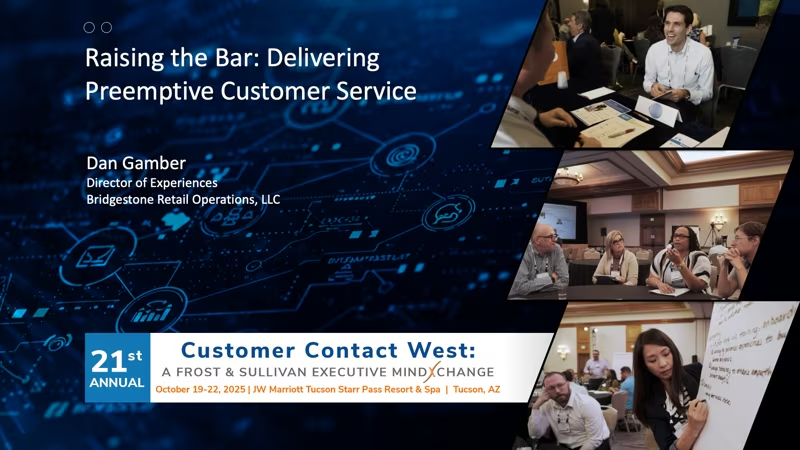It should come as no surprise that the customer experience is rapidly becoming the most important contact center objective. To make matters even more challenging, the traditional voice channel is now joined by email, chat/IM, social and SMS as popular channels for customer service, with most Millennials preferring the non-voice channels. This shift will make the quality management the focus of contact centers worldwide.
What is Quality Management?
Quality management is a continuous process of agent interaction monitoring and analysis that allows organizations to continuously improve the quality of interactions with their customers. It can be distilled down to the following five major functions:
- Recording Interactions
- Evaluating Quality
- Calibration and Scoring Process
- Voice of the Customer and Analytics
- Coaching
Organizations need to capture the interactions between the agent and customer, whether voice or text, by recording those interactions in easily indexed and retrievable form. Selected interactions are reviewed by trained quality experts who evaluate the quality of interactions based on an objective scoring process. Since people are required for scoring, there is inherently human subjectivity in the results. Through a calibration process, there is an attempt to normalize each evaluator’s scores driving consistency throughout the organization for scoring and coaching. Analytics tools will help quickly identify poor performers, best practices, recurring problems and key customer experience details. Incorporating the voice of the customer through customer surveys and analytics will arm businesses with valuable information about individual and team quality performance, which will initiate coaching of agents to improve quality, and then return to recording new interactions to ensure that the quality has in fact improved. With a good quality management process in place, callbacks are reduced, process improvement opportunities are identified, employee development is facilitated, and the overall performance of contact centers are improved. It’s no wonder most contact centers consider quality management to be the most fundamental and important of all workforce optimization components.
Quality management has been used for years in contact centers all over the world, but most organizations have not paused to develop a set of best practices for the overall process. Below are five simple best practices that have proven to be effective for contact centers of all sizes:
1. Identify the Proper Sampling Size
The number of calls that should be monitored will vary by industry and by type of call, for example, financial services typically requires more monitoring because of the many regulations in this vertical market. On average, about 6.3 calls per agent per month are monitored for quality. Contact centers monitoring less than one call per agent per month are definitely on the border-line of insufficient monitoring. Organizations should look at the statistics of their own call center to determine what is sufficient.
2. Establish a Well-Defined Monitoring Process
As with most things in quality management, the process can vary widely by contact center, but the important thing is that the monitoring process is clearly documented, since this will force critical thinking as well as consistency within and across contact centers. For example, an organization may decide to use dedicated analysts, or supervisors or coaches for evaluation. And if there are multiple contact centers, companies may want to centralize the function for all monitoring, calibration and compliance recording.
3. Design a Concise, but Thorough Evaluation Form
The form used by evaluators is critically important to ensuring a successful quality management process. Each evaluation form should include shared evaluation questions that are used in all of evaluation forms as well as questions that are tailored to specific call types. Shared evaluation questions might include core KPIs and behaviors, compliance procedures and behaviors, active listening skills and soft skills. These shared questions help with the analysis of overall quality management and progress being made. Tailored questions might include more granular measures for specific channels, product or vertical market customizations as well as specific behaviors expected in certain communication channels.
4. Create a Scoring Guide
In order to ensure that everyone on the evaluation team is aligned, and to create an atmosphere of fairness for the quality management process, a written scoring guide is needed. Typically, a cross-functional team would create the guide that documents clearly what makes “good” good and what makes “bad” bad. It would include specific descriptors, causes and behaviors as well as many examples, so that any reader can understand what the contact center is trying to achieve. Companies should also dedicate training time for agents and management to fully understand the scoring guide. After training, agents should know what is expected of them and how to perform.
5. Implement a System for Coaching
Coaching is not an optional function, even though it often is one of the first areas to get sacrificed when interaction volumes spike. Effective coaching is the culmination of all the work done throughout the quality management process, so it should not be perceived as a secondary priority. You can’t hold agents to metrics and goals when there is no mechanism to help reach them.
Learn more, Tuesday, April 9th at our ThinkTank: Getting the Most from Your Quality Management Process.



